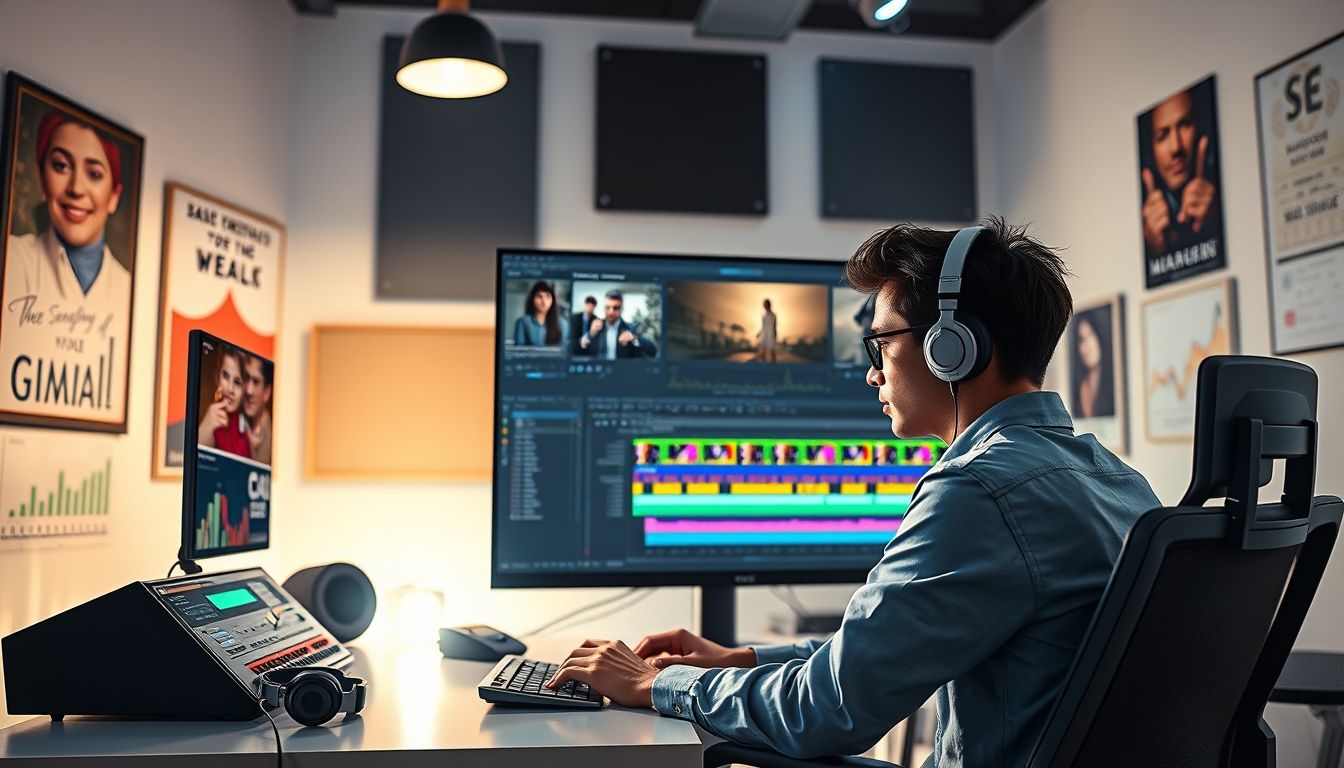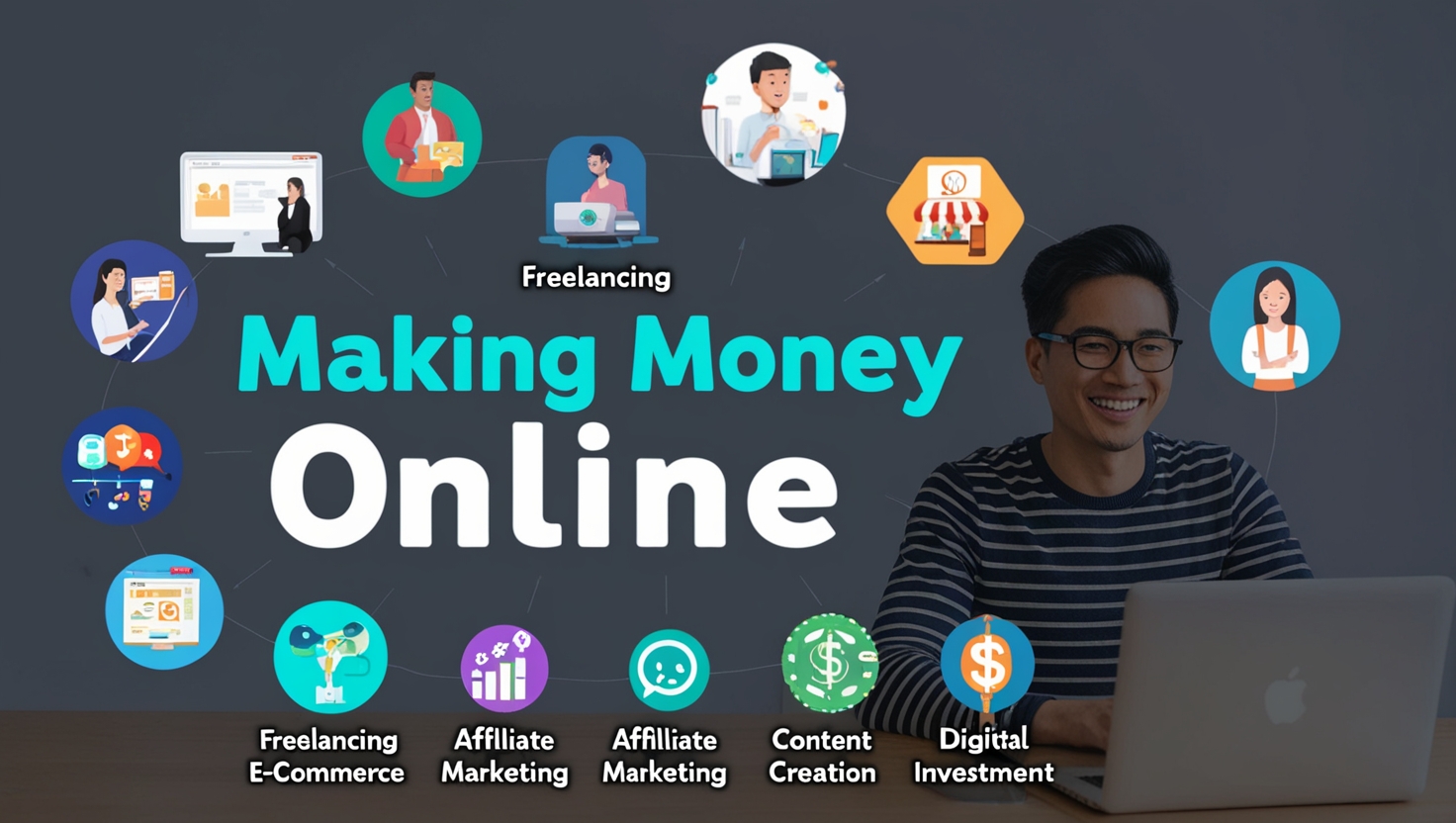Introduction: The World of Video Editing and Montage
In the age of visual content, video editing and montage have become highly sought-after skills. Whether you aspire to work in film, television, advertising, digital marketing, or even create your own content on YouTube, understanding the fundamentals of montage opens doors to a wide range of opportunities.
Chapter 1: Essential Skills for a Professional Editor
1.1 Understanding the Basics of Visual Storytelling
Montage is not just about assembling clips together; it is the art of telling stories through images. An editor must understand how the order of shots, pacing, and visual effects affect the viewer's experience. Learn how to build a story, create tension, and convey the message effectively.
Example: In a thriller film, fast and choppy montage can be used to create a sense of fear and anticipation.
1.2 Mastering Editing Software
There are many professional editing software options, such as Adobe Premiere Pro, Final Cut Pro, and DaVinci Resolve. Choose the software that suits your needs and budget, and start learning it comprehensively. Practice using the various tools, such as cutting, pasting, adding effects, and color correction.
Tip: Look for online training courses or attend workshops to learn the secrets of the software from experts.
1.3 Basics of Audio
Audio is just as important as video. An editor must be able to purify the audio, add sound effects, and create soundtracks to create an integrated audio-visual experience. Learn how to use audio processing tools in your editing software.
Statistic: A study showed that 80% of viewers consider audio quality a critical factor in evaluating the quality of a video.
Chapter 2: Different Types of Montage
2.1 Linear vs. Non-Linear Editing
Linear editing is the old style that relies on magnetic tape, while non-linear editing is the modern style that relies on computers and editing software. Non-linear editing offers greater flexibility and speed in work.
2.2 Advertising Video Montage
Advertising video montage requires special skills, such as the ability to grab the viewer's attention in seconds and convey the marketing message clearly and effectively. The editor must be able to choose the right music, add attractive visual effects, and use motion graphics creatively.
Example: Commercials shown during Ramadan often rely on fast and impactful montage to create an emotional connection between the viewer and the product.
2.3 Documentary Film Montage
Documentary film montage requires patience and precision, as the editor must assemble a large amount of footage and interviews to create a coherent and compelling story. The editor must be able to identify the crucial moments in the interviews, arrange the shots logically, and add the appropriate soundtrack to create the right atmosphere.
Chapter 3: Building a Strong Portfolio
3.1 The Importance of a Portfolio
A portfolio is your calling card as an editor. It should showcase your best work and demonstrate your skills and abilities. Make your portfolio diverse, including different projects such as commercials, short films, music videos, and digital content.
3.2 How to Create a Professional Portfolio
- Choose your best work: Don't put everything you've done in your portfolio. Choose only the projects you are proud of, and which best showcase your skills.
- Update your portfolio regularly: Add new projects regularly, and remove old projects that no longer represent your best work.
- Make your portfolio easily accessible: Use a website or online portfolio platform, such as Vimeo or Behance.
Chapter 4: Pricing and Fair Pricing for Editing Services
4.1 Factors Determining Editing Price
The price of editing depends on several factors, such as: your level of experience, the type of project, the length of the video, and the complexity of the montage. Research editing prices in the local market to determine a fair price for your services.
4.2 Pricing Strategies
- Hourly Pricing: Estimate the number of hours it will take to complete the project, and multiply it by your hourly rate.
- Project Pricing: Estimate the total cost of the project, based on the amount of work and its complexity.
- Value Pricing: Price your services based on the value you provide to the client, not just on cost.
Chapter 5: Self-Marketing for Editors
5.1 Building a Personal Brand
Personal branding is how you present yourself to the world. Define your strengths, values, and message, and build your personal brand around them. Use social media, your website, and your portfolio to promote your personal brand.
5.2 Using Social Media
Social media is a powerful tool for self-marketing. Share your work, interact with your audience, and build relationships with potential clients. Use platforms like LinkedIn, Instagram, and Twitter to promote your services.
Chapter 6: Finding Job Opportunities
6.1 Freelance Websites
Freelance websites, such as Upwork and Freelancer, are a great place to find editing job opportunities. Create a professional profile, and search for projects that match your skills and experience. Submit competitive bids, and build a good reputation by providing high-quality work.
6.2 Production Companies and Advertising Agencies
Production companies and advertising agencies are among the most important entities that hire editors. Search for companies and agencies that work in your field of interest, and submit job applications to them. Prepare your portfolio, and be ready for a job interview.
Chapter 7: The Importance of Continuous Learning and Professional Development
7.1 Keeping Up with Technological Developments
The field of editing is constantly evolving, so it is important to stay up to date with the latest technologies and software. Participate in training courses, read articles and books, and follow blogs and YouTube channels specializing in editing.
7.2 Developing Creative Skills
Editing is not limited to technical skills only, but also requires creative skills. Develop your artistic sense, learn how to tell stories in an innovative style, and experiment with different montage styles.
Chapter 8: Challenges Facing Editors and How to Overcome Them
8.1 Tight Deadlines
Editors often face great pressure to complete projects in a short time. Learn how to manage your time effectively, prioritize your tasks, and avoid procrastination.
8.2 Dealing with Difficult Clients
You may encounter some clients who are difficult to deal with. Be patient, listen to their feedback, and try to find solutions that satisfy both parties. Set clear boundaries, and avoid working with clients who do not respect your time and effort.
Chapter 9: The Future of Video Editing and Montage
9.1 Artificial Intelligence and Montage
Artificial intelligence is beginning to play an increasing role in the field of montage, where it can be used to automate some routine tasks, such as cutting and pasting. However, human creativity is still necessary to create an impactful and engaging montage.
9.2 Virtual Reality and Augmented Reality
Virtual reality and augmented reality technologies are opening up new horizons for montage. Editors can use these technologies to create interactive and immersive experiences for viewers.
Chapter 10: Tips for Aspiring Editors
If you aspire to build a successful career in the field of montage, here are some tips:
- Be passionate about what you do: Passion is the main driver of success.
- Invest in your education: Learn continuously, and develop your skills.
- Build a strong portfolio: Showcase your best work, and update your portfolio regularly.
- Market yourself: Use social media, and build relationships with potential clients.
- Be patient and persistent: Success doesn't come overnight.
I wish you the best of luck on your journey in the world of video editing and montage!




